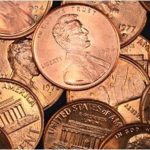One of the oldest games in the foreign exchange market is to always buy the currencies of strong countries that are growing, and to sell short the currencies of the weak countries that are shrinking.
Any doubts that China?s Yuan is a huge screaming buy should have been dispelled when news came out that it had displaced Germany as the world?s largest exporter.
The Middle Kingdom shipped $1.2 trillion in goods in 2009, compared to only $1.1 trillion for The Fatherland. The US has not held the top spot since 2003. China?s surging exports of electrical machinery, power generation equipment, clothes, and steel were a major contributor. German exports were mired down by lackluster economic recovery in the EC, which has also been a major factor behind the weak euro. Sales of luxury Mercedes and BMW cars, machinery, and chemicals have plummeted.
Interest rate rises for the Yuan and a constant snugging of bank reserve requirements by the People?s Bank of China, have stiffened the backbone of the Middle Kingdom?s currency even further. That is the price of allowing the Federal Reserve to set China?s monetary policy via a semi fixed Yuan exchange rate. It is certain that Obama?s stimulus programs are reviving China?s economy more than our own.
The last really big currency realignment was a series of devaluations that took the Yuan down from a high of 1.50 to the dollar in 1980. By the mid-nineties, it had depreciated by 84%. The goal was to make exports more competitive. The Chinese succeeded beyond their wildest dreams.
There is absolutely no way that the fixed rate regime can continue, and there are only two possible outcomes. An artificially low Yuan has to eventually cause the country?s inflation rate to explode. Or a future global economic recovery causes Chinese exports to balloon to politically intolerable levels. Either case forces a revaluation.
Of course timing is everything. It?s tough to know how many sticks it takes to break a camel?s back. Talk to senior officials at the People?s Bank of China, and they?ll tell you they still need a weak currency to develop their impoverished economy. Per capita income is still at only $6,000, less than a tenth of that of the US. But that is up a lot from a mere $100 in 1978.
Talk to senior US Treasury officials, and they?ll tell you they are amazed that the Chinese peg has lasted this long. How many exports will it take to break it? $1.5 trillion, $2 trillion, $2.5 trillion? It?s anyone?s guess.
The truly amazing thing is that the Yuan has maintained its strength in the face of a widespread collapse of currencies across the rest of the emerging market (EEM) space. Could this be your big ?BUY? signal?
One thing is certain. A free floating Yuan would be at least 50% higher than it is today, and possibly 100%. In fact, the desire to prevent foreign hedge funds from making a killing in the market is a not a small element in Beijing?s thinking.
The Chinese Central bank governor, Zhou Xiaochuan, says he won?t entertain a revaluation for the foreseeable future. The Americans say they need it tomorrow. To me that means about six months. Buy the Yuan ETF, the (CYB). Just think of it as an ETF with an attached lottery ticket. If the Chinese continue to stonewall, you will get the token 3%-4% annual revaluation they are thought to tolerate. Double that with margin, and your yield rises to 6%-10%, not bad in this low yielding world. Since the chance of the Chinese devaluing is nil, that beats the hell out of the zero interest rates you now get with T-bills.
If they cave, then you could be in for a home run.









